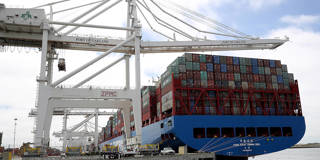
US-China Decoupling by the Numbers
Politicians in the United States do not want to face the uncomfortable reality about the US trade deficit. Unless they address the macroeconomic underpinnings of America’s multilateral trade imbalance, targeted tariffs and sanctions against China are the political equivalent of rearranging the deck chairs on the Titanic.
NEW HAVEN – American politicians have a long history of mangling economic-policy debates. Some recognize reality, like when George H.W. Bush characterized so-called supply-side tax cuts as “voodoo economics.” But far too many distort economic statistics and analysis to score political points – think of “Modern Monetary Theory” or “deficit scolds.”